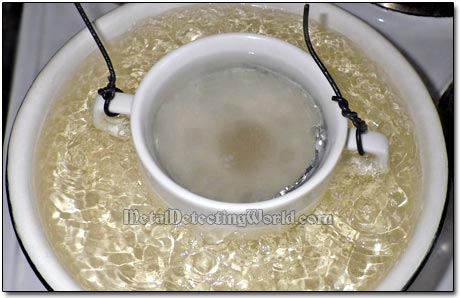How To Remove Tarnish From Silver Coins - Tutorial, page 2
Follow 12 Steps To Achieve Satisfactory Results in Galvanic Cleaning of Coins
(...CONTINUED from Previous Page)
Cleaning coins by Electrochemical Reduction is an easy task if you follow these simple steps:
Step 1. If your coins have not been treated with any chemical cleaning methods prior to the electrochemical cleaning, brush any dirt off them with the toothbrush and toothpaste under running water and then soak them in distilled water for a couple of days. Soaking will loosen some oxidation which you will be able to remove by brushing as well. Otherwise proceed with step 2.
Step 2. Inlay the soup bowl with a few layers of the aluminum foil.
Step 3. Prepare the electrolyte by dissolving a teaspoon of baking soda (or washing soda) in a cup of distilled water and pour the electrolyte into the soup bowl. I would recommend to prepare a few cups of electrolytic solution so that you would have enough of it for the entire cleaning session.
1 Teaspoon of Baking Soda/1 Cup of Water - Soda/Water Proportion for Making Electrolyte
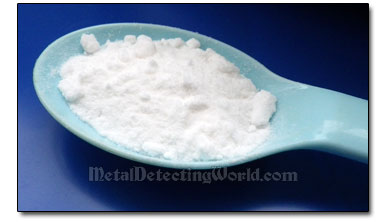
Step 4. Spread the coins out on the aluminum foil on the bottom of the soup bowl and keep in mind that the coins must NOT touch one another at any time. If they do, they will acquire dark spots during the process.
Step 5. Place a small weight (I use a small pebble with a hole, which was found on the seashore; the hole symbolizing "good luck" :)) on the foil. If the electrolytic solution in the bowl starts boiling, but it should not, the foil will not begin to move causing the coins to slide on one side and touch one another. Now the improvised galvanic cell has been completed, and the redox reactions have begun!
A "Lucky" Pebble (weight) and Tarnished Silver Coins On Aluminum Foil In Electrolyte
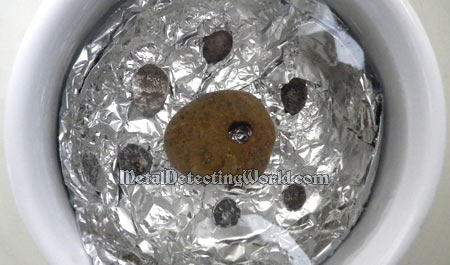
Step 6. Place the galvanic cell into a Saute Pan and fill the pan with tap water half way below the soup bowl's rim. Any higher level of water in the pan will allow the water to get inside the soup bowl - the galvanic cell, when the water starts to boil. Tie a short length of wire to each handle of the soup bowl to be able to take the bowl out of the boiling water later when you need to.
Setup for Galvanic Coin Cleaning
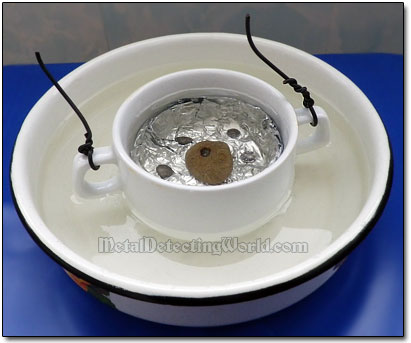
Step 7. Put the saute pan with the galvanic cell on the stove and begin heating up the galvanic cell to speed up the redox chemical reactions.
Heating Up Galvanic Cell on Electric Stove
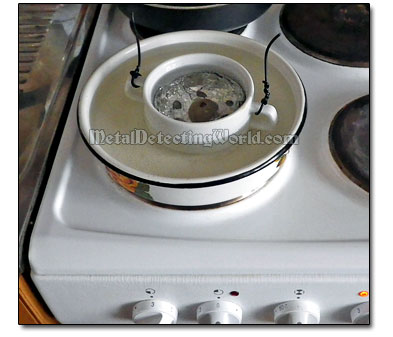
Step 8. When the water inside the sauté pan starts to boil, reduce the heat a little so that the water would still boil but not vigorously. The hole idea behind using the second container for the galvanic cell - the soup bowl, is to avoid the boiling of electrolytic solution inside the galvanic cell; thus, preventing the tiny coins from losing a good electrochemical contact with the aluminum foil while being lifted off the bottom by the forceful boiling water. Of course, if you galvanically clean a few silver dollars, you do not have to worry about a little weight (the pebble) and the boiling water.
Heated Electrochemical Reduction Cleaning of Tarnished Silver Coins in Progress
